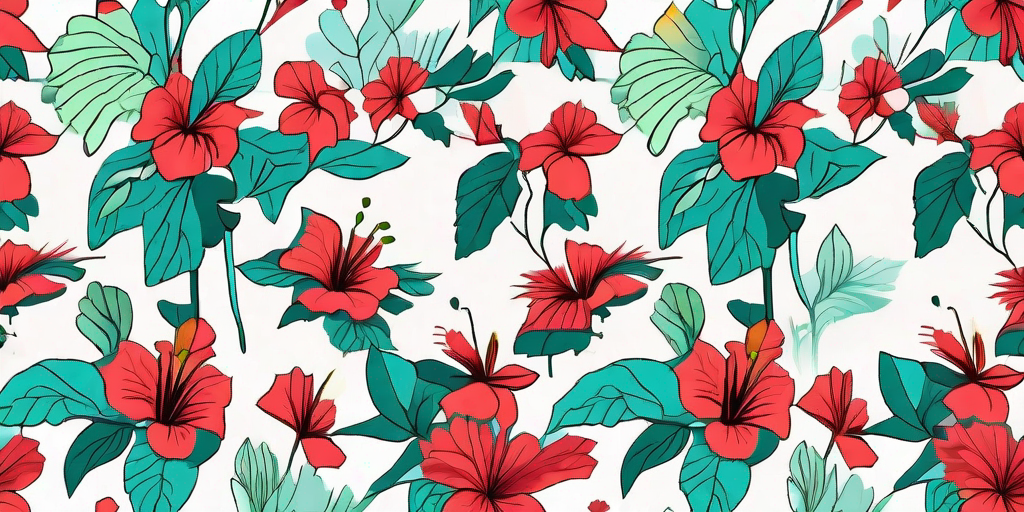
Ah, the hibiscus! A flower that's as fun to say as it is to grow. Bursting with color and personality, these tropical beauties can transform any garden into a vibrant paradise. But, with over 200 species, where does one even begin? Fear not, dear gardener, for we have compiled a comprehensive guide to the colorful world of hibiscus varieties. So, grab your gardening gloves, and let's dive in!
The Hibiscus Family: A Brief Overview
Before we delve into the specifics, let's get to know the hibiscus family a little better. Originating from warm climates, these plants are known for their large, trumpet-shaped flowers and glossy leaves. They are generally classified into two main categories: tropical and hardy hibiscus.
Tropical hibiscus, as the name suggests, thrive in warm, humid environments. They are evergreen, meaning they retain their leaves all year round. Hardy hibiscus, on the other hand, can withstand colder climates and are deciduous, shedding their leaves in the fall.
Tropical Hibiscus
These are the show-stoppers of the hibiscus world. With their bold, bright colors and exotic appeal, tropical hibiscus are sure to turn heads. Some popular varieties include the 'President' with its fiery red blooms, and the 'El Capitolio' known for its unusual, ruffled petals.
Despite their tropical origins, these plants can be grown in cooler climates, provided they are kept indoors during the colder months. They love the sun, so make sure they get plenty of it!
Hardy Hibiscus
Don't let the name fool you, these plants are anything but boring. Hardy hibiscus are known for their enormous blooms, some reaching up to 12 inches in diameter! Varieties like the 'Summer Storm' with its dark foliage and pink flowers, and the 'Fireball' with its striking red blooms, are sure to make a statement in any garden.
Hardy hibiscus are more tolerant of cold weather and can be left outdoors all year round in most regions. They prefer full sun, but can tolerate partial shade.
Caring for Your Hibiscus
Now that you've chosen your hibiscus, it's time to roll up your sleeves and get to work. But don't worry, with a little love and care, your hibiscus will reward you with a spectacular display of blooms.
Firstly, hibiscus love the sun, so choose a spot in your garden that gets at least six hours of sunlight a day. They also prefer well-drained soil, so avoid areas that tend to get waterlogged. If you're growing tropical hibiscus in a cooler climate, remember to bring them indoors before the first frost.
Watering and Feeding
When it comes to watering, hibiscus like to be kept evenly moist, but not waterlogged. A good rule of thumb is to water when the top inch of soil feels dry to the touch. During the growing season, feed your hibiscus with a high-potassium fertilizer to encourage blooming.
Remember, overwatering can lead to root rot, and nobody wants that! So, be sure to check the soil before watering, and always empty any excess water from the saucer.
Pruning and Pest Control
Pruning is an essential part of hibiscus care. It not only keeps the plant looking tidy, but also encourages more blooms. The best time to prune is in early spring, before the plant starts to produce new growth.
As for pests, hibiscus are prone to aphids, whiteflies, and spider mites. Regularly check the undersides of leaves for signs of these pests, and treat with an insecticidal soap if necessary.
Frequently Asked Questions
- When is the best time to plant hibiscus?
- The best time to plant hibiscus is in the spring, after the last frost.
- Can hibiscus grow in pots?
- Yes, hibiscus can be grown in pots. In fact, this is a great option for tropical hibiscus in cooler climates, as the pots can be brought indoors during the winter.
- How often should I fertilize my hibiscus?
- During the growing season, it's best to fertilize your hibiscus every two weeks.
- Why are my hibiscus leaves turning yellow?
- Yellow leaves can be a sign of overwatering, under watering, or a nutrient deficiency. Check the soil moisture levels and adjust your watering schedule accordingly. If the problem persists, consider using a balanced fertilizer.
Conclusion
So there you have it, a comprehensive guide to the colorful world of hibiscus varieties. Whether you're a seasoned gardener or a budding green thumb, these vibrant beauties are sure to add a touch of tropical charm to your garden.
Remember, gardening is all about patience and perseverance. So, don't be disheartened if your hibiscus doesn't bloom right away. With a little love and care, it won't be long before your garden is blooming with color. Happy gardening!















